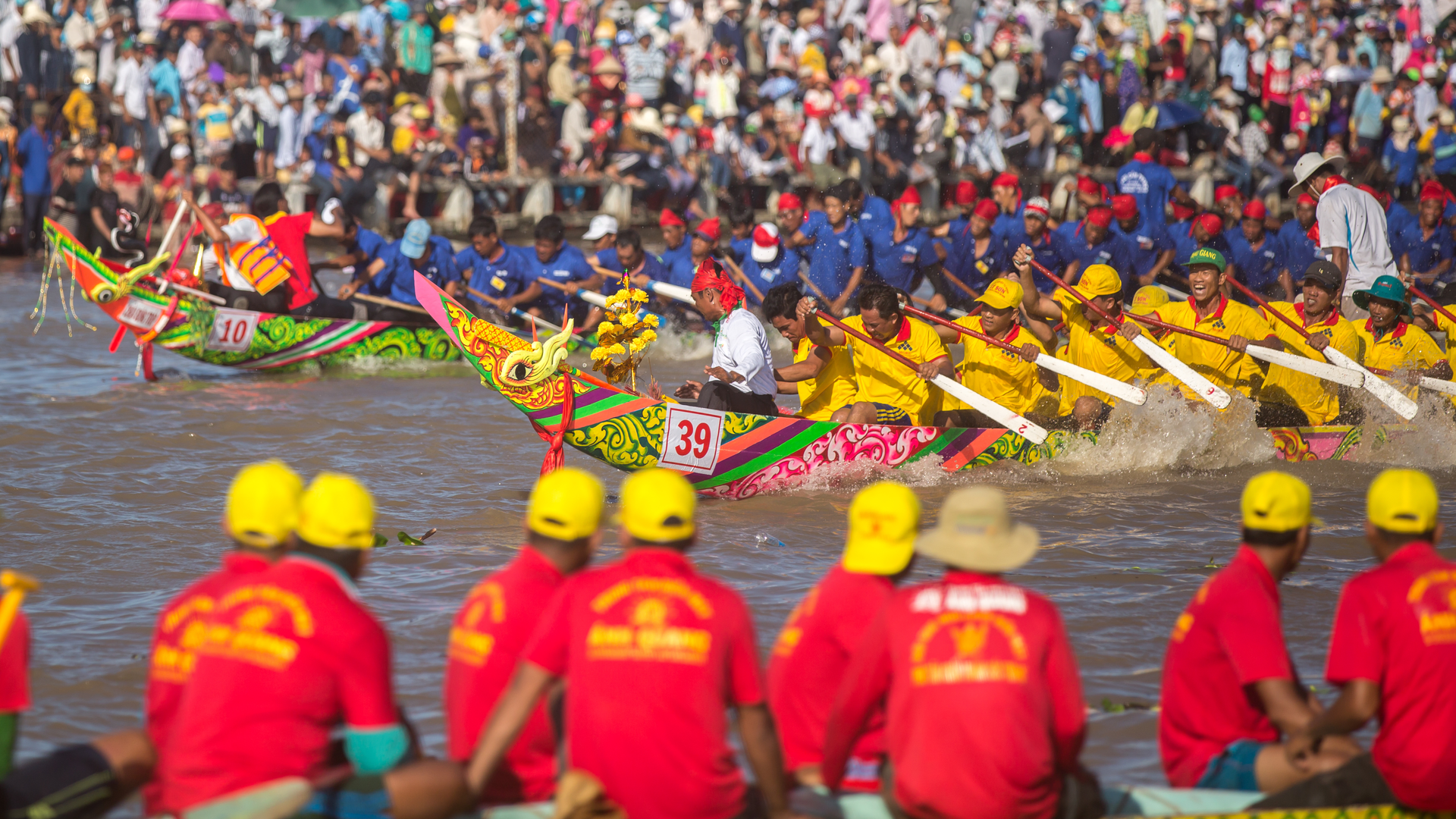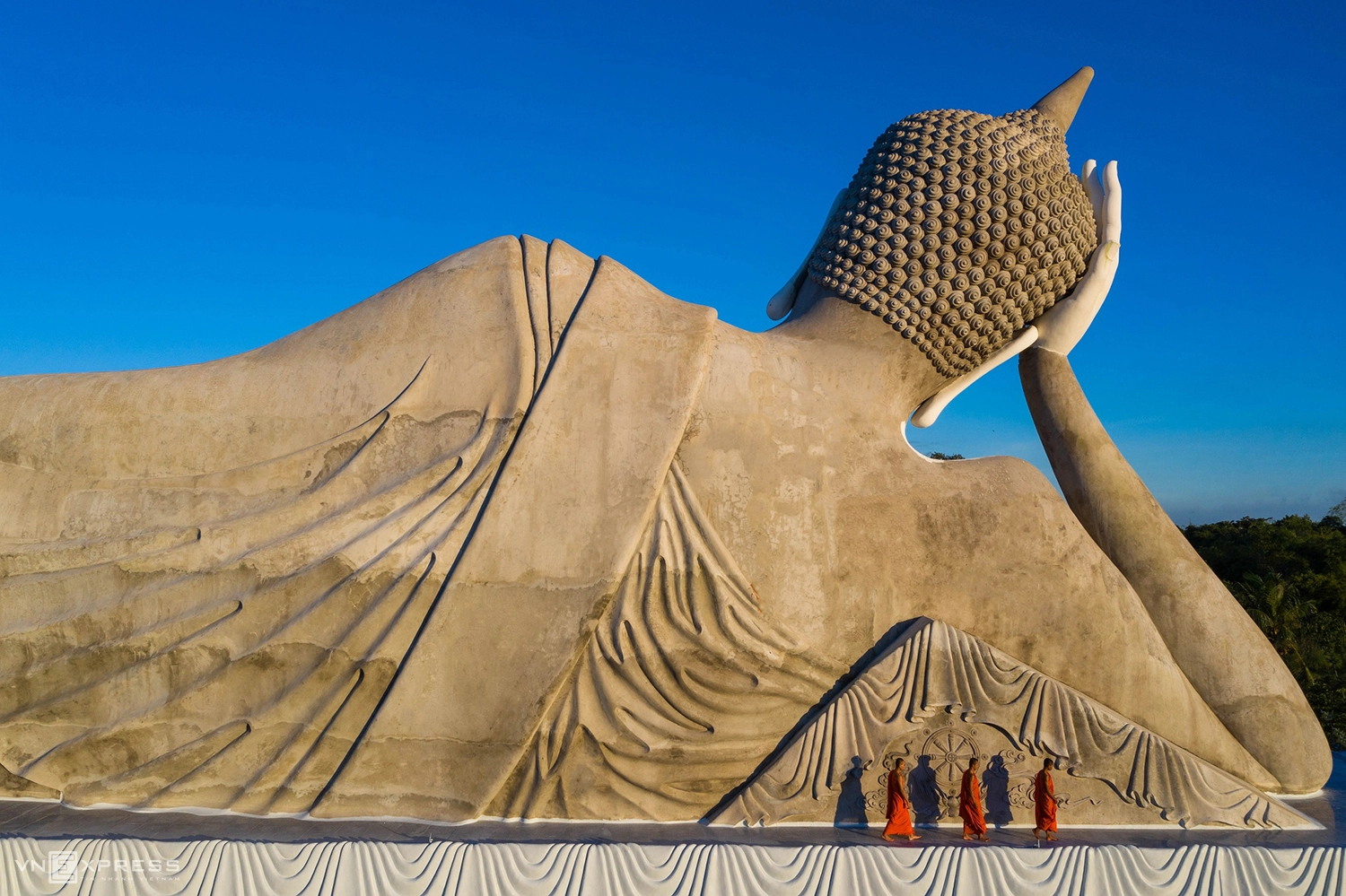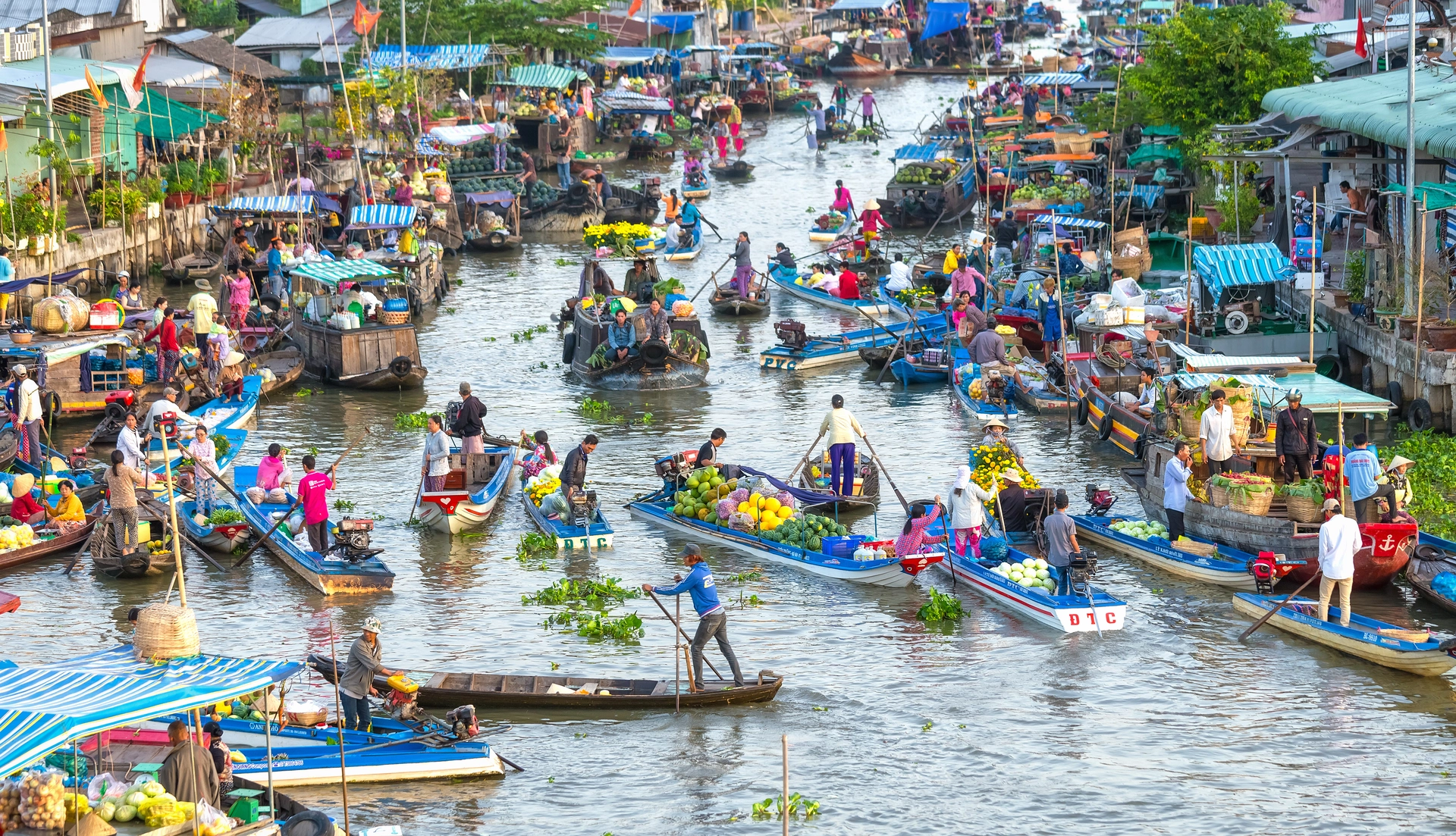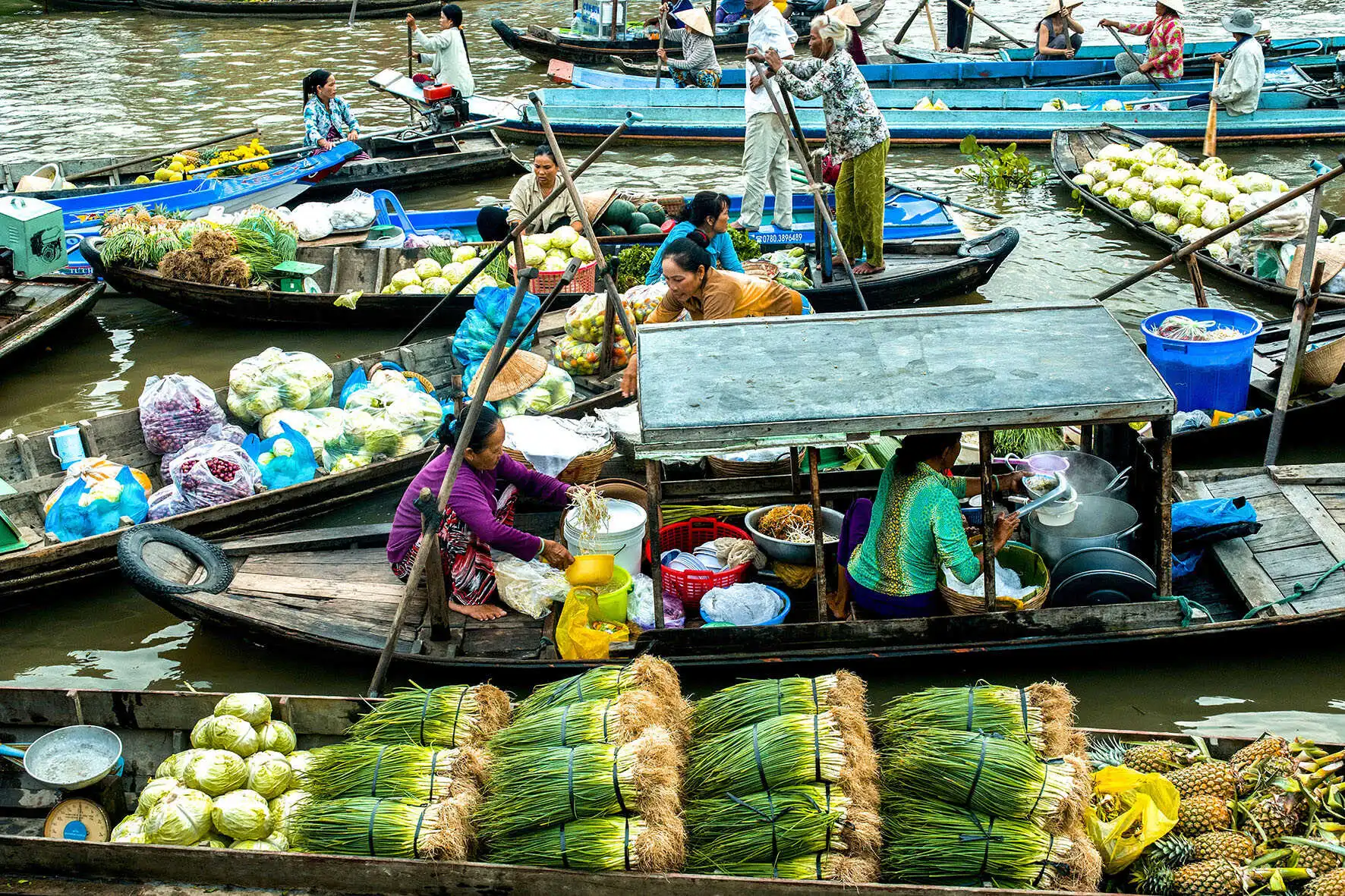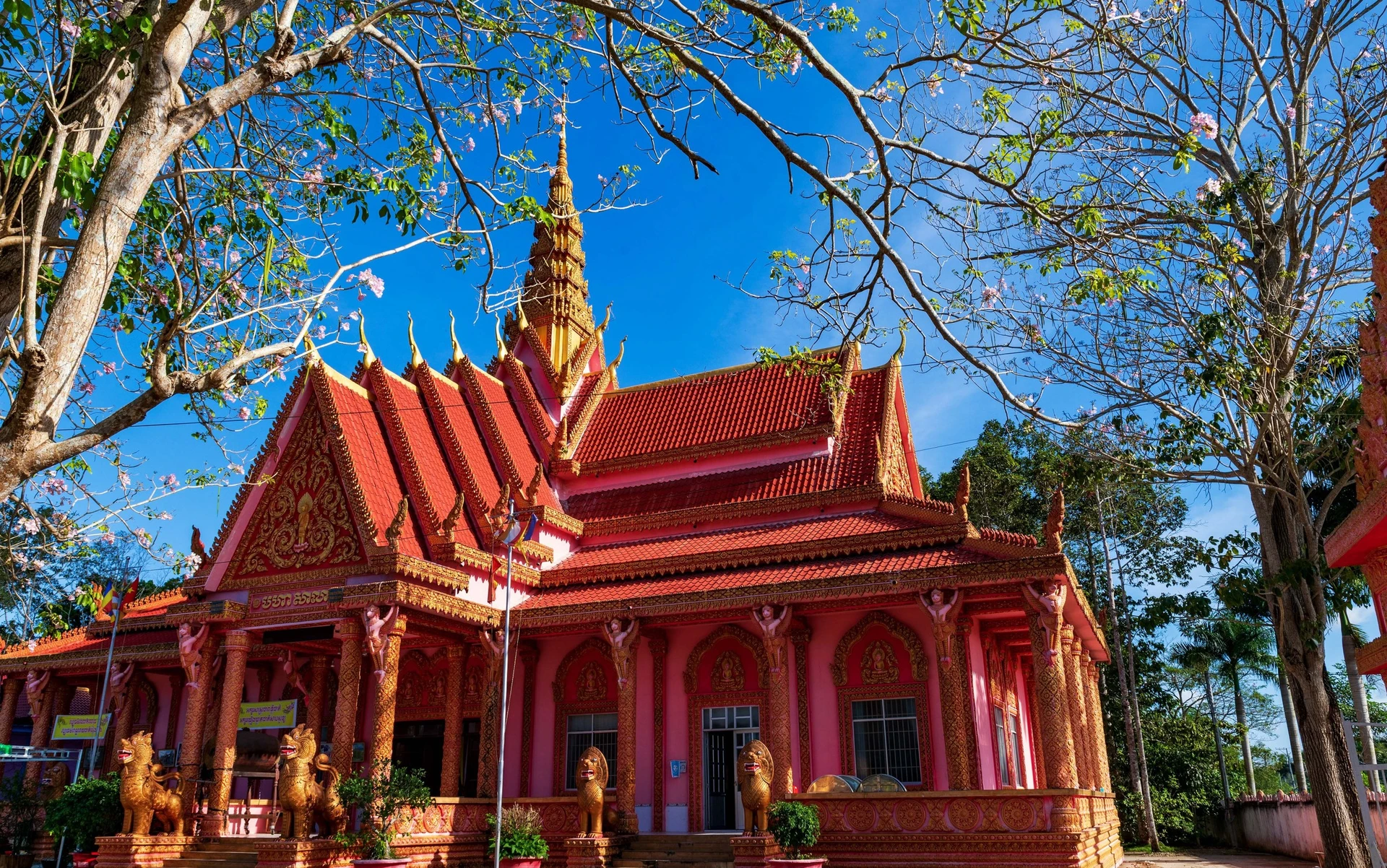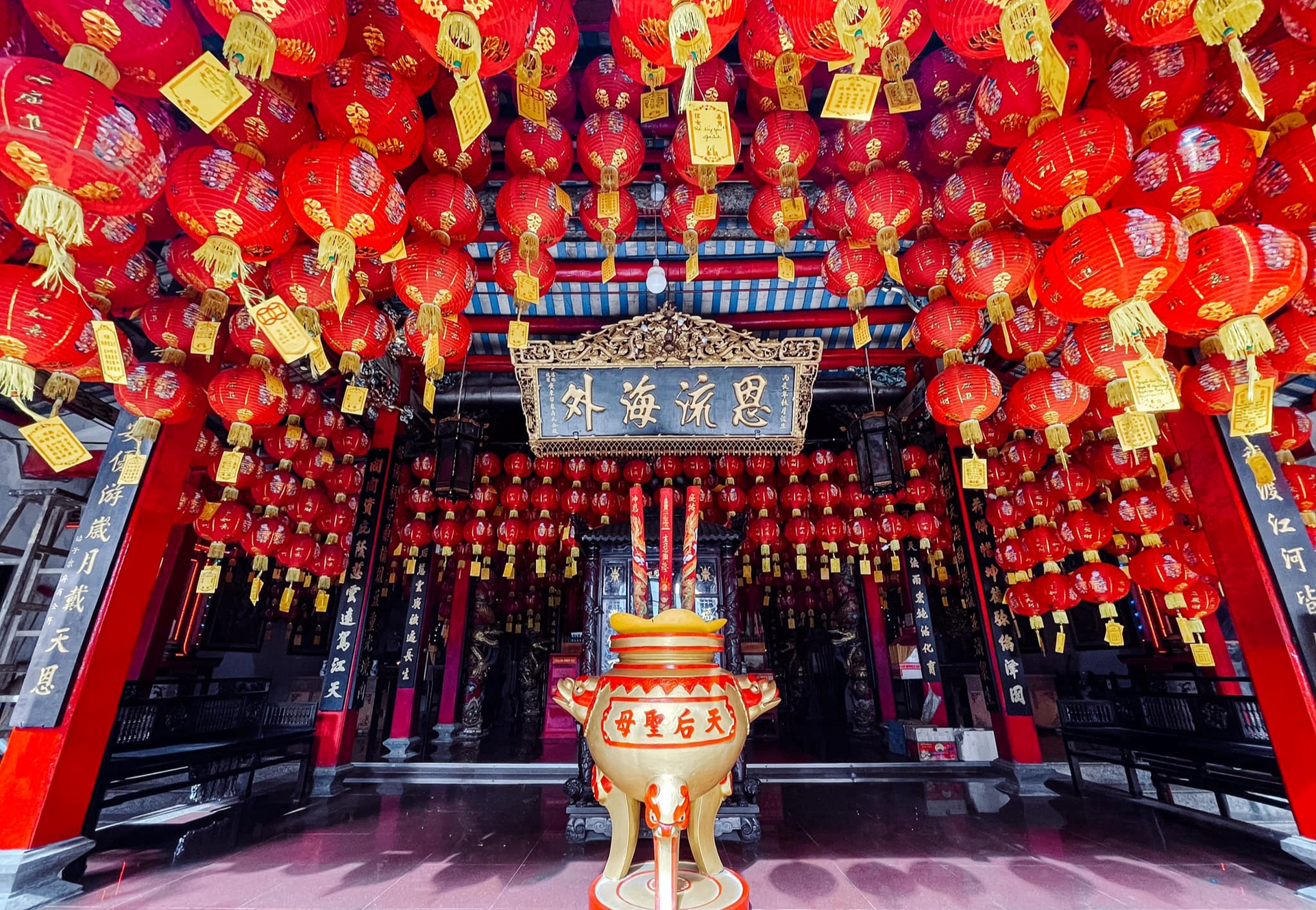About Soc Trang
Soc Trang is a peaceful land located in the Mekong Delta in which there is a cultural interference between the Kinh - Khmer - Chinese peoples. They have lived together for generations.
In addition to visiting famous pagodas with unique architecture such as Bat pagoda, Chen Kieu pagoda, you also have the opportunity to enjoy charming natural scenery on Nga Nam floating market and fresh food of Soc Trang.
Best Time To Visit Soc Trang
The weather in Soc Trang is quite pleasant all year round and rarely affected by floods, so you can go on a trip almost every time. Especially, if you want to join the exciting traditional boat racing and water lamp drop festival, you can come here around October and November.
The weather is hot, the air is stuffy
Spring comes to Nga Nam floating market
The sacred temples sparkle in the sunlight
Birds fly back to their nests in Tan Long stork garden
Sudden rainfalls
Nice and cool weather
Welcome the dawn on the fields of wind turbines
Explore the mangrove forests
The orchards are lushly green with abundant fruits
Rising tides
The rains fall loudly
Fish and prawns swimming in the fields
Enjoy countless delicacies
Impressive floating season on the river
Cool and pleasant weather
Khmer people celebrate Ok Om Bok Festival
Local culture is rich in identity
Durian pía cake to bring home as a gift
Transport
